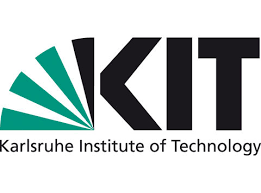Karlsruhe Institute of Technology: Innovative sensor detects molecules specifically and precisely
Whether in vehicles or smartphones, in research laboratories or industrial plants – sensors are already ubiquitous. They record certain physical or chemical properties, such as pressure, strain or gas molecules, and forward the data for processing. Therefore, the further development of sensors is crucial for technological progress. Sensors are characterized by their selectivity, i.e. the ability to detect a certain property even in the presence of other, potentially interfering properties, as well as their sensitivity, i.e. the ability to detect even low values.
Researchers at KIT and the Technical University of Darmstadt have now succeeded in developing a new type of sensor for molecules in the gas phase. As the scientists report in the specialist journal Advanced Materials, the functional principle of this new class of sensors is based on the combination of sensitive graphene transistors with tailor-made organometallic coatings. This combination enables selective detection of molecules. As a prototype example, the authors demonstrate a specific ethanol sensor that, unlike currently available commercial sensors, does not react to other alcohols or moisture.
Graphene is a modification of carbon with a two-dimensional structure. By its very nature, graphene is highly sensitive to foreign molecules that accumulate on the surface. “However, graphene as such does not have any molecule-specific interaction, as is required for use as a sensor,” explains Ralph Krupke, Professor at the Institute for Nanotechnology (INT) at KIT and at the Institute for Materials Science at TU Darmstadt, who together with Professor Wolfgang Wenzel from KIT’s INT and Professor Christof Wöll, head of the Institute for Functional Interfaces (IFG) at KIT, were in charge of the study. The first author is Sandeep Kumar, who conducts research in Ralph Krupke’s laboratory at KIT and is doing his doctorate in the field of molecular nanostructures at the Institute for Materials Science at TU Darmstadt.
Sensors can be precisely adjusted
Metal-organic frameworks (MOFs) are made up of metallic nodes and organic molecules as connecting struts. Through various combinations, these highly porous crystalline materials can be tailored for various applications, for example in order to achieve a selective absorption capacity for certain molecules in sensors. The researchers from Karlsruhe and Darmstadt demonstrated a selective sensor platform by growing a surface-mounted metal-organic framework (SURMOF) directly on a graphene field effect transistor (GFET). Such a component benefits from the high sensitivity and the simple readout of a GFET as well as from the high selectivity of a SURMOF.
“The combination of the unique electronic properties of graphene with the immense chemical variability of MOFs opens up huge potential,” says Christof Wöll. Since SURMOFs can be produced in many variants and the interface between GFET and SURMOFs can be designed chemically differently, the work of the researchers from Karlsruhe and Darmstadt paves the way for a completely new class of sensors with precisely adjusted selectivity and sensitivity. “This is where simulation can help,” explains Wolfgang Wenzel, since we can build many MOFs on the computer without having to synthesize them. “

